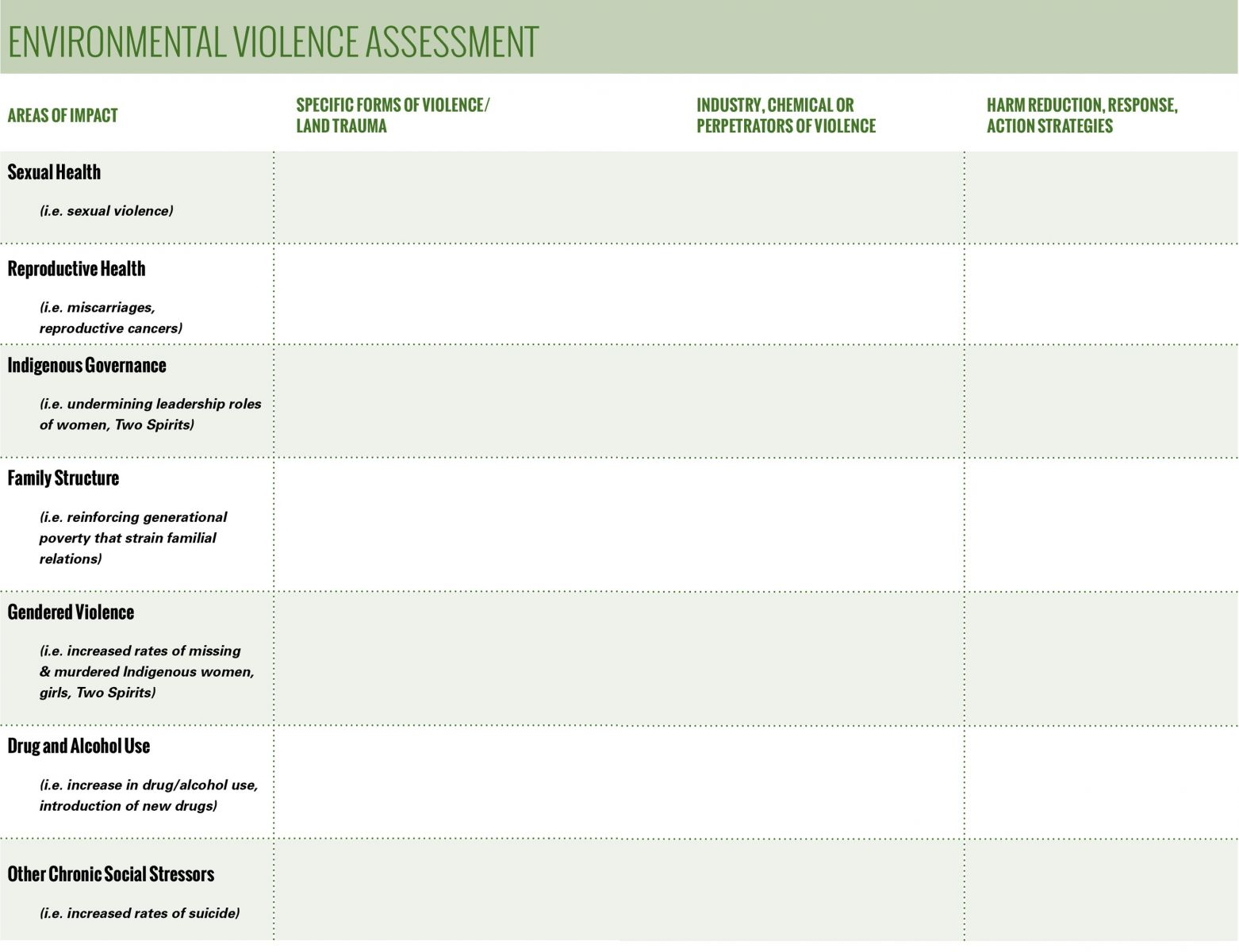Environmental Assessment
This environmental violence assessment is one tool you can use to identify the landscape of environmental violence within your community. It can also be used to facilitate discussions about perpetrators of violence, as well as harm reduction strategies or community safety plans (during the event that industry remains in your community) to address this violence.
PHASE 1
Develop a definition of environmental violence that is specific to your nations’ understanding of the connection between land and body.
Discuss the role of women, youth, Two Spirit and LGBTTQQIA people in land defense and governance on the land. What is the role of each and how are they all uniquely impacted by environmental violence?
What are words in your language that describe your relationship to land? Is there a word or phrase in your language that can name environmental violence?
How has industry built patriarchy into our nations? How do we support Indigenous women, youth and Two Spirit people to address that?
PHASE 2 - Environmental Violence Assessment
Download and print the Environmental Violence Assessment worksheet and begin documenting what environmental violence looks like in your territory.
Document both the stories/experiences of community members, as well as information about the number of people impacted (i.e. number of miscarriages or birth deformities, etc.).
PHASE 3 - Create / Plan
Create community responses to reduce the harm of each form of environmental violence. Plan short and long term goals for pushing back on industry and holding industry accountable for the forms of environmental violence your community is experiencing.
Example: If your Environmental Violence Assessment shows that your community is experiencing an increase in the rates of sexually transmitted infections and HIV, one possible plan/response would be to seek/support an increase in culturally-safe harm reduction services.
This may include:
- Increasing access to condoms, dams and other barrier methods
- Increasing access to clean injection materials, crack pipes, etc. (if injection drug use is common in areas of industry).


